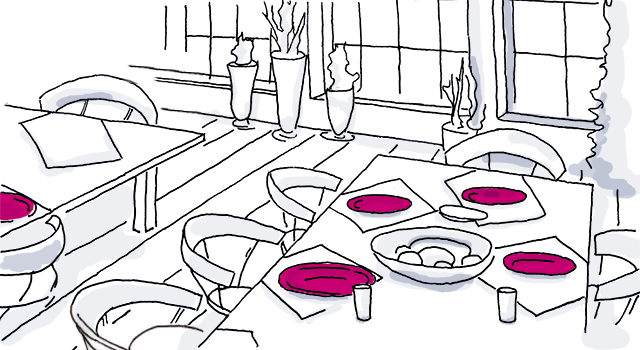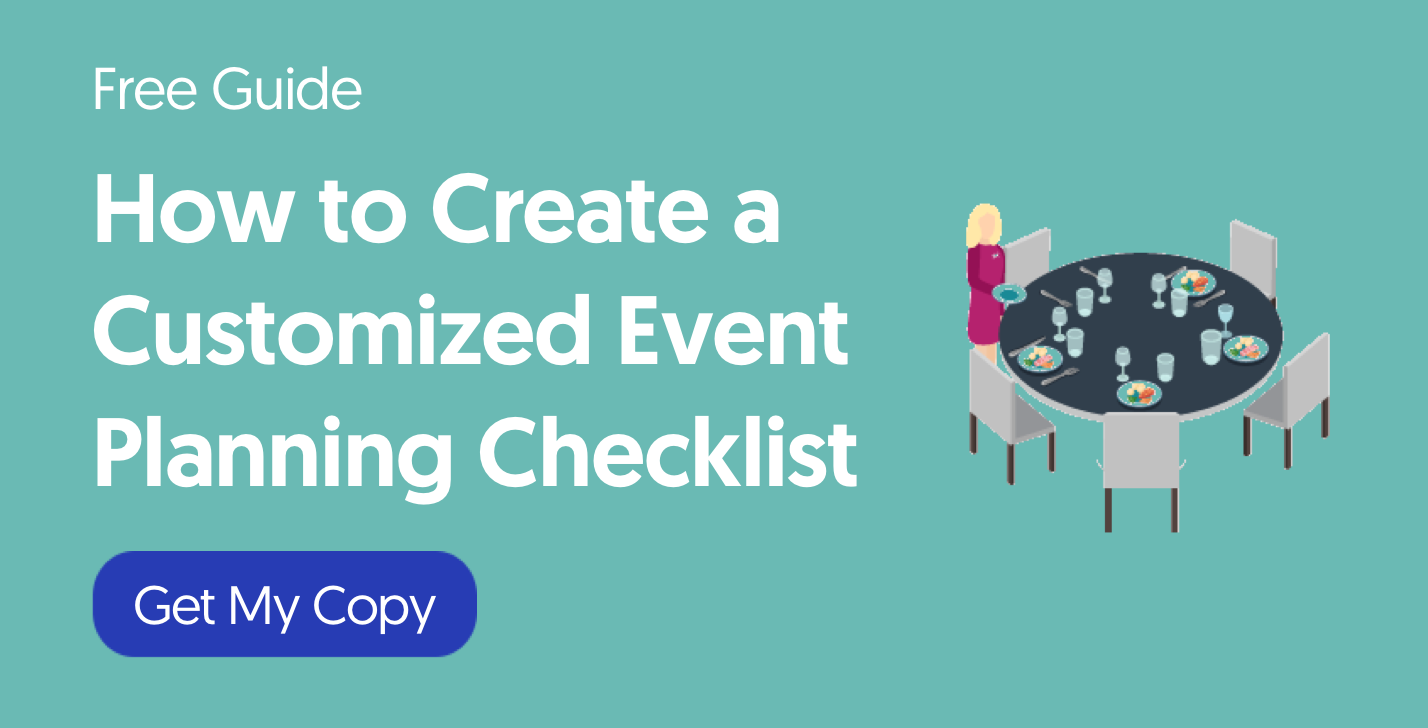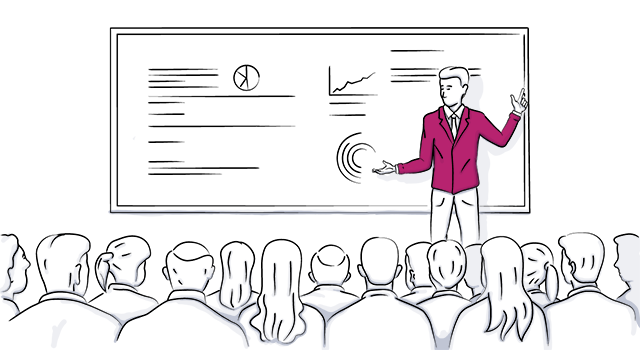
Wisdom Wednesday: 4 Ways to Pick the Best Event Background Music
You can’t eat it or drink it. You can’t see it or touch it. You don’t need it to live. Yet music is a human universal, found in every culture around the world.
The deep human connection to music makes it a powerful tool for events”occasions when people come together to celebrate, network, or do business. And, like most aspects of event planning, choosing music proves more complicated than it seems. Learn the three main reasons event background music impacts the tempo and mood of successful events, and use these tips, tricks, and examples to guide your sound selection.
1. Music influences the mood of event attendees
Music has a profound effect on mood, and psychological researchers aren’t the only ones who understand this. According to 2013 research in the journal Frontiers of Psychology, mood regulation is one of the most important reasons that people say they listen to music.
But music also has effects that are not as obvious. It reaches the brain deeply and broadly, working in concert on areas like emotion, timing, memory, anticipation, pleasure, reward and language”and on the interplay of these. For example, one set of researchers found that memory for faces improved when people listened to emotionally touching background music, linking emotion, memory, and social interaction.
These effects are subtle, so don’t rely on the hidden power of music to help you remember people at your next networking meeting. But you can enlist music to support the mood you’re targeting among your event attendees in an unobtrusive, pleasant way that may not even register with them consciously.
Music can help guests:
- Feel welcomed. As guests enter a garden party, a string quartet or a Renaissance recorder ensemble can help set a relaxing, refined, and welcoming tone. The presence of live musicians conveys the message that guests are moving away from the ordinary, and the event is designed to delight and welcome them.
- Feel excited. For product launches and pop-ups, experiential marketing is the name of the game. Involve music in the experience for an added boost of good feelings and excitement. Think about persona profiles in your target audience and make notes about their musical tastes. Or, do you know people in your target audience personally? Ask if you can scroll their go-to playlists for different moods and activities.
- Have fun. At your company-sponsored Family Swim Night at the local pool, a live band says: This isn’t just open swim, this is a party. Time for fun!
For most events, go the extra mile to keep the lyrical selection SFW unless your client asks for music with explicit content directly. Even if the event is kid-free, adults who find a selection offensive will feel unwelcome at the event: Probably not your goal as the event planner.
Creating a playlist for a banquet
A variety of styles will work”classical, folk, fusion, jazz, reggae, world”as long as the music isn’t hectic or intrusive. Avoid electronica, compositions with dramatic crescendos or a driving tempo, and music that rattles the subwoofers. If you think the music would be good to work out to, it’s not the right background music for conversation and eating.
The goal is providing mood enhancement that stays planted in the background. Consider the audience and their probable tastes, as well as the ˜feel’ of the banquet. An elegant affair? Classical or chamber music is a good choice. Celebratory? Opt for on-trend music with wide appeal. Family-focused? Pick playful pop music.
2. Music gives events structure
Think about how music signals it’s time for award recipients to wrap up their acceptance speeches. You can use music as a prompt whether your event involves speakers (such as an awards ceremony), social togetherness (such as a wedding or anniversary celebration), or professional interactions ( such as a conference with breaks between seminars).
In general, use down-tempo music when you want to encourage people to linger, whether that’s in a restaurant, a networking event, or in the exhibit room at a trade show. More lingering can lead to more chatting with salespeople and perhaps more purchasing. In a restaurant setting, down-tempo music has been found to increase the length of stay and the amount of money people spend on drinks.
Up-tempo music, on the other hand, encourages people to get a move on. Restaurants use it to encourage table turnover, but it can also work for the last few minutes of a break between seminars to encourage participants to wrap up their conversations and find their next session.
Music structure for a social occasion
At the beginning of a party or reception, use warm, lyrical music to set a welcoming tone. Then as the event gets going, shift the musical selection to fun dance music with high energy. In the wrap-up, change the music again towards slower and more peaceful songs. Donna Summer’s ˜Last Dance’ is played at the end of wedding receptions because it’s a mellow dance song and cues the end of the event.

3. Music enhances the event purpose
Music is either important or very important to more than 60 percent of people, says Sounds Like Branding’s survey on music in public spaces. That’s a significant number of people who expect and enjoy music when they are away from home. Music can lend its power to support the goal of your event.
Well-chosen music can help people:
- Celebrate a milestone: At a wedding, a first birthday party, a bar or bat mitzvah, a quinceañera, or an anniversary celebration, lively music puts guests in a celebratory frame of mind. Make sure your music is enjoyable for guests across generations by mixing classics in with more contemporary music.
- Create positive associations: A pop-up event may aim for a hip ambiance. Music popular among the pop-up’s target demographic encourages its potential audience to enter and hang out. At the same time, the entire time the audience is there, the music helps build a strong association between brand and vibe.
- Mingle: At a networking event, background music puts people in a calm and relaxed mood, smooths over awkward conversational silences, and gives people something to enjoy between conversations. For the best distribution of recorded music, direct it through several small speakers and keep it at a comfortably low volume throughout the space.
- Feel special: Guests of fundraising gala should feel posh and appreciated. A solo instrumentalist, such as a pianist or a harpist can lend an air of sophistication while also providing beautiful background music. A soloist like a saxophonist or a violinist can perform with a recorded backing track and even traveling through the banquet space for an intimate, exclusive feel.
Are there times to leave music out?
- For learning: Music doesn’t necessarily help people learn. So if you are running a software training or a seminar, steer clear during instructional portions.
- If it’s noisy already: At a large event with a lot of background noise, music is overwhelming. Attendees at a model train trade show, for example, may be much happier without music in the exhibit hall. That way, they can hear each other and listen to the sounds of the trains without distraction.
Arranging background music for a dinner reception
Welcome guests with live piano music when they enter. During dinner, the musician can continue to play, or recorded music can take over. When the reception ends, move to mid-tempo recorded music to encourage guests to make their way to coat-check.

4. Music raises copyright infringement issues
These days, ready access to streaming services can make it seem like music is free to play in any space”as long as you have a subscription. For event planners, that could be a costly misunderstanding.
US copyright law requires that music is licensed when played in any public setting. What constitutes a public setting? According to the law, it’s any setting besides a normal circle of family and friends.
So if you’re planning a graduation party for family and friends of the graduate: no license needed. Go ahead and choose your favorite streaming service, look for family-friendly playlists with a fun vibe and start planning your speaker layout.
But if you are planning a public event, stay on the right side of copyright law and play only music you’re licensed to play.
There are two ways to accomplish this:
- Use music in the public domain. You can look for such music on sites like Free Music Archive. The music is free for public and commercial use, but curating a playlist will mean some legwork.
- Buy a music license.
In the US, you can buy music licenses from four main Performing Rights Organizations (PROs). They are ASCAP, BMI, SESAC, and GMR. However, it can be hard to know which performers are licensed with which organization, and the PRO’s lists generally don’t overlap. You’d have to license from all four, or make sure only to play artists from one company’s stable.
Increasingly, businesses turn to services like Cloud Cover and Soundtrack Your Brand to manage the licensing and legwork concerns. For a monthly fee, these services handle the licensing and the playlist curation, giving you lists that include only music you’re licensed to play. Then you can choose from playlists like ˜Soothing Ambient,’ ˜Wired R&B,’ and ˜NextGen Hip-Hop,’ or moods like ˜Classy,’ ˜Relaxed,’ ˜Trendy,’ or ˜Party.’
Why license? First and foremost, because it’s the right thing to do. It’s also popular with the public: 60 percent of respondents in the survey by Sounds Like Branding said it was either important or very important that artists, musicians, and songwriters are paid for music played publicly. Finally, if you get caught playing unlicensed music, you’d be on the hook for your legal fees, the PRO’s legal fees, and damages or fines.
Product launch playlist
A product launch is most definitely a public event, so you’ll need a license for the music. Then consider: What’s the brand personality of your company and the spirit of the new product? Choose from licensed playlist options like ˜K-Pop Hits,’ ˜Coffeehouse Neo-Soul,’ ˜Upbeat Essentials’ and ˜Satin Slipper Sounds’ to settle on the one that most closely captures the vibe you want.
Planning the background music for your events takes time and attention to detail. But when you get it right, it makes the difference between an event that hits all the right notes and one that falls flat. Enjoy harnessing the power of background music to set a mood and enhance the guest experience.
Now you know all the background event music essentials!
Learn more ways to enhance guest experiences with icebreakers attendees will actually like. Or, explore five things to think about when choosing music for corporate events.

